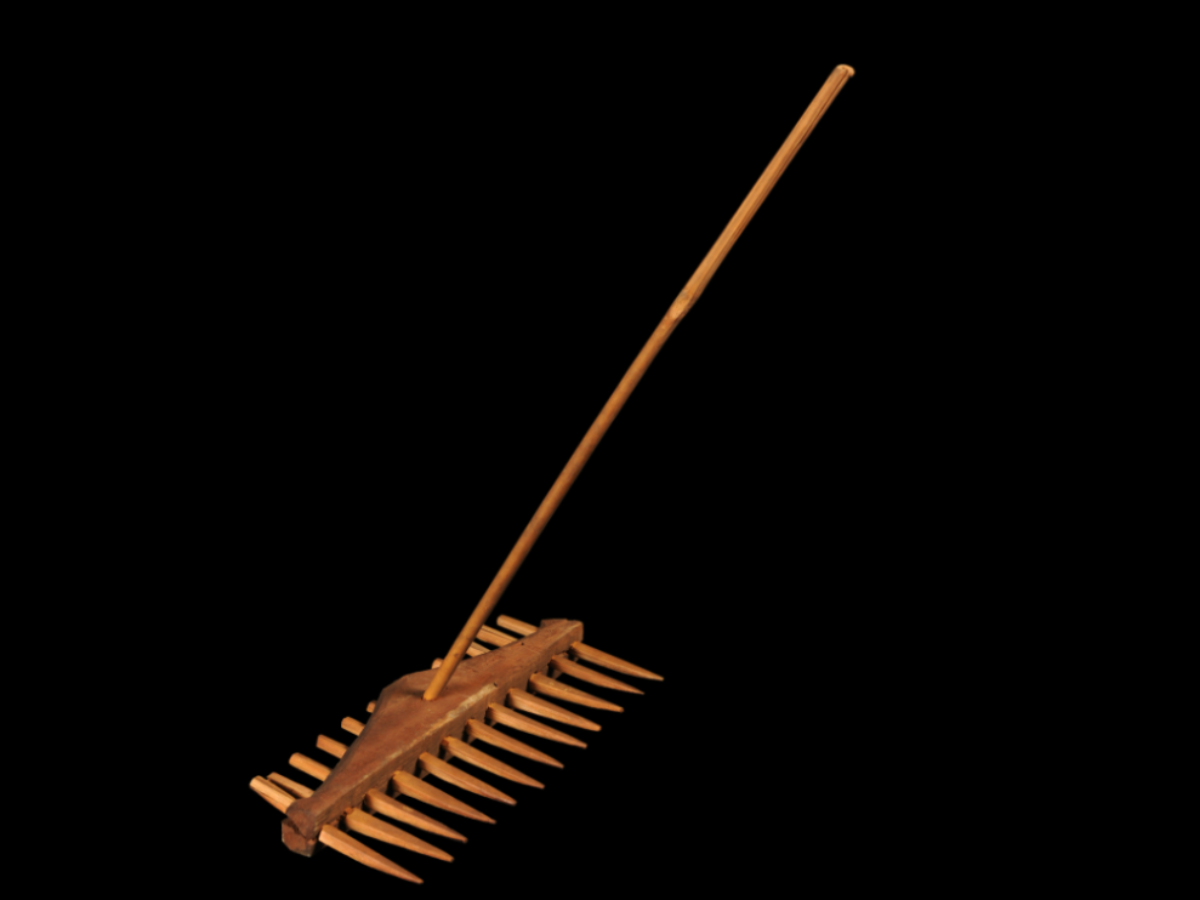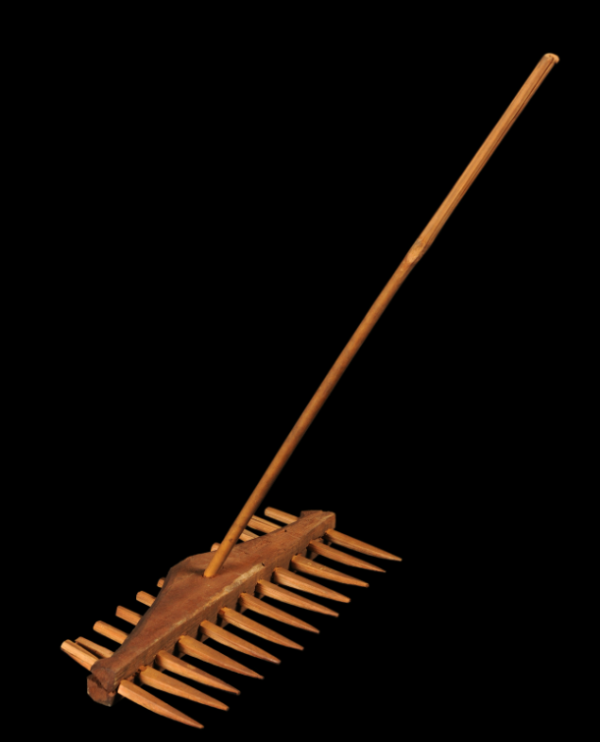State
Tribe Name
Art Type
short description
The cultivation practices of the Rabhas, who identify themselves as a tribe of Assam are imbued with all of the traditional agrarian knowledge and practices sustaining a bond between man and the earth. The harrow is one such farming implements that are used in traditional farming
Light yet strong, the handle made from bamboo would allow proper control, while the wooden scraper would assist in leveling and softening the soil prior to planting of crops (Elwin, 1950). This type of farming helps in soil aeration and water retention, which is most vital for the agriculture of rice and vegetables.
As important as it may functionally be, the harrow also assumes a cultural value for Rabha people: it symbolizes their self-sufficient mode of living and their relationship with nature (Mohanty, 2012). Thus, the Rabha people nurture their distinctive form of farming despite developments in agriculture. The knowledge of these practices and the use of a harrow also provide testimony to their intellect in sustainable farming and their adaptability to the adversities imposed by nature .
Many Rabha farmers today still prefer the traditional harrow because it is environmentally friendly, inexpensive, and easily repaired. It is a major part of the Rabha agricultural heritage and is handed down from generation to generation.
Light yet strong, the handle made from bamboo would allow proper control, while the wooden scraper would assist in leveling and softening the soil prior to planting of crops (Elwin, 1950). This type of farming helps in soil aeration and water retention, which is most vital for the agriculture of rice and vegetables.
As important as it may functionally be, the harrow also assumes a cultural value for Rabha people: it symbolizes their self-sufficient mode of living and their relationship with nature (Mohanty, 2012). Thus, the Rabha people nurture their distinctive form of farming despite developments in agriculture. The knowledge of these practices and the use of a harrow also provide testimony to their intellect in sustainable farming and their adaptability to the adversities imposed by nature .
Many Rabha farmers today still prefer the traditional harrow because it is environmentally friendly, inexpensive, and easily repaired. It is a major part of the Rabha agricultural heritage and is handed down from generation to generation.
Thumbnail

Filter Postion
Left
Filter Background
Off
Theme
Filter Header Image

content
Image

description
The cultivation practices of the Rabhas, who identify themselves as a tribe of Assam are imbued with all of the traditional agrarian knowledge and practices sustaining a bond between man and the earth. The harrow is one such farming implements that are used in traditional farming
Light yet strong, the handle made from bamboo would allow proper control, while the wooden scraper would assist in leveling and softening the soil prior to planting of crops (Elwin, 1950). This type of farming helps in soil aeration and water retention, which is most vital for the agriculture of rice and vegetables.
As important as it may functionally be, the harrow also assumes a cultural value for Rabha people: it symbolizes their self-sufficient mode of living and their relationship with nature (Mohanty, 2012). Thus, the Rabha people nurture their distinctive form of farming despite developments in agriculture. The knowledge of these practices and the use of a harrow also provide testimony to their intellect in sustainable farming and their adaptability to the adversities imposed by nature .
Many Rabha farmers today still prefer the traditional harrow because it is environmentally friendly, inexpensive, and easily repaired. It is a major part of the Rabha agricultural heritage and is handed down from generation to generation.
Light yet strong, the handle made from bamboo would allow proper control, while the wooden scraper would assist in leveling and softening the soil prior to planting of crops (Elwin, 1950). This type of farming helps in soil aeration and water retention, which is most vital for the agriculture of rice and vegetables.
As important as it may functionally be, the harrow also assumes a cultural value for Rabha people: it symbolizes their self-sufficient mode of living and their relationship with nature (Mohanty, 2012). Thus, the Rabha people nurture their distinctive form of farming despite developments in agriculture. The knowledge of these practices and the use of a harrow also provide testimony to their intellect in sustainable farming and their adaptability to the adversities imposed by nature .
Many Rabha farmers today still prefer the traditional harrow because it is environmentally friendly, inexpensive, and easily repaired. It is a major part of the Rabha agricultural heritage and is handed down from generation to generation.
Image Mode
portrait
promoted
Off
Verified
Off
